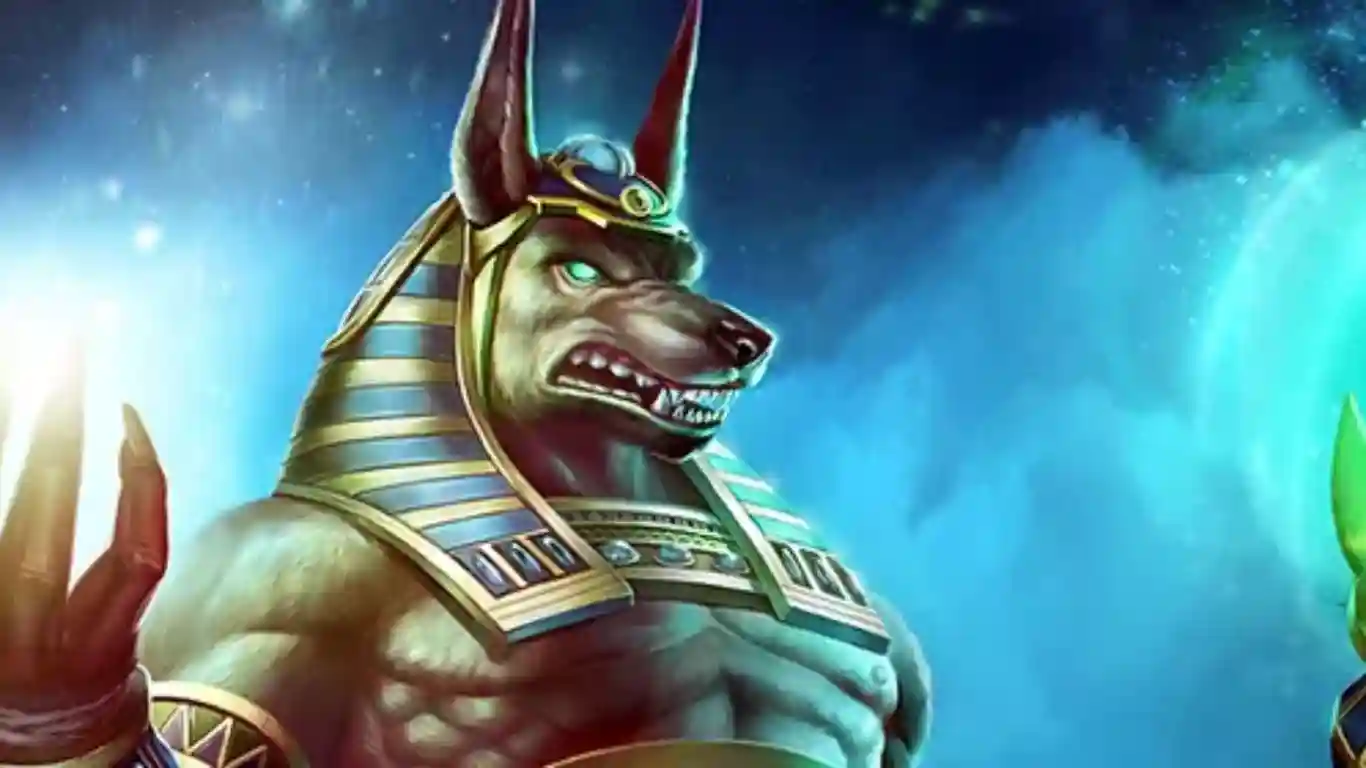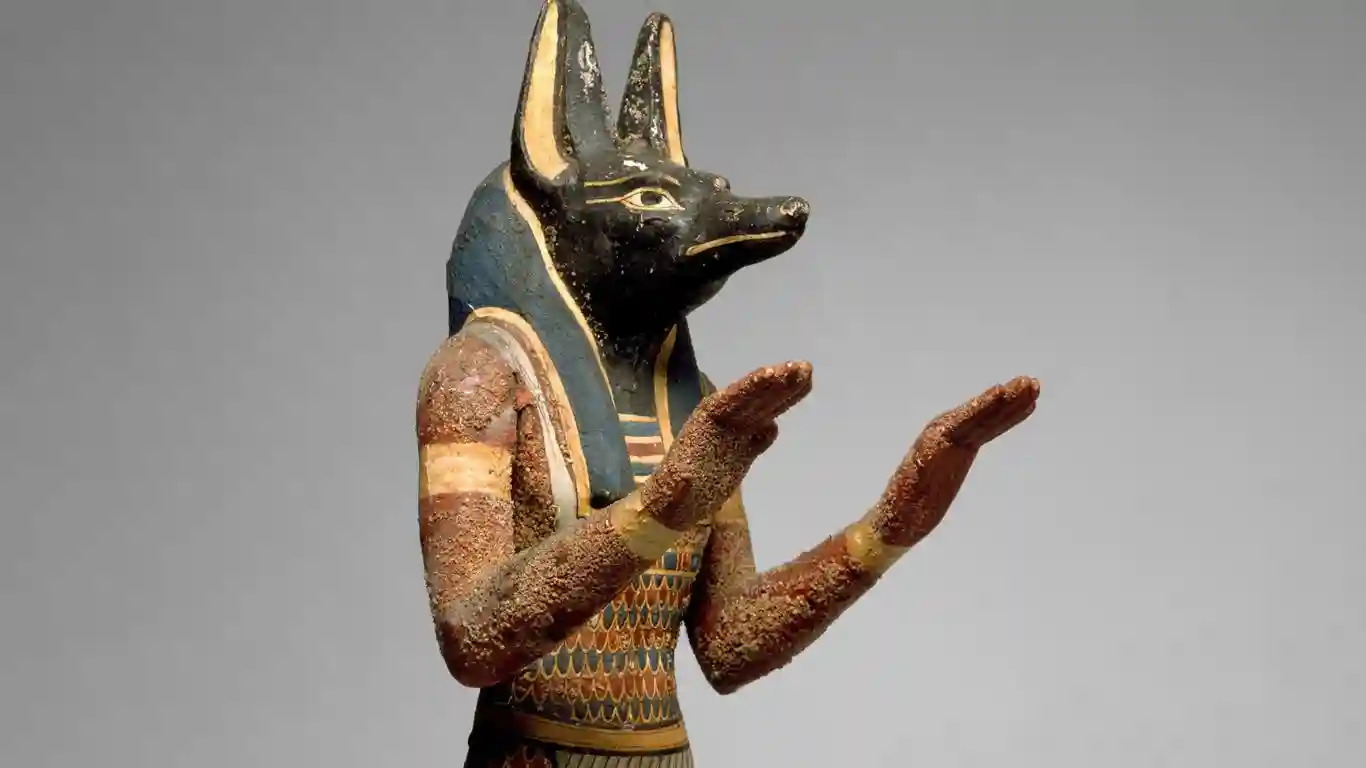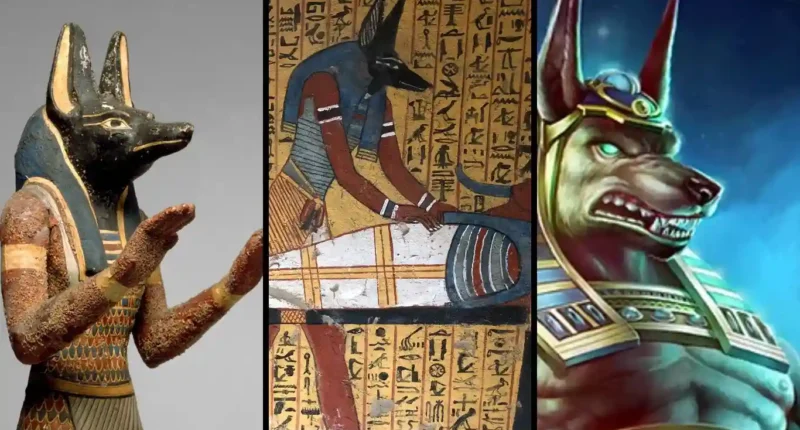Anubis | Egyptian God of Death: Anubis is the Egyptian deity of mummification, the afterlife, and he also serves as the helper and the protector of lost souls. One of the earliest Egyptian deities, he most likely evolved from the equally ancient jackal god Wepwawet, with whom he is frequently confused. Anubis is shown on royal tombs from the First Dynasty of Egypt (c. 3150–2890 BCE), but it is clear that his cult predated this time because it allowed him to be invoked on the tomb’s walls for protection. He is believed to have originated at some point during the Predynastic Period in Egypt (c. 6000-3150 BCE) when the Egyptians believed a strong canine deity was the best defense against wild canines. At the time, jackals and wild dogs were known to dig up freshly buried corpses.
Depiction & Associations
He is portrayed as a black dog, a jackal-dog cross with sharp ears, or as a strong man with a jackal’s skull. Not because Egyptian canines or jackals were black, but rather because of its meaning, black was chosen as the hue. Black represented both the rotting of the corpse and the lush soil of the Nile River Valley, which stood for renewal and vitality. Therefore, the strong black dog served as the guardian of the dead, ensuring that they received proper burials and standing by them in the afterlife to aid in their resurrection.
Before Osiris rose to power in the Middle Kingdom (2040–1782 BCE), he was referred to as “First of the Westerners,” which denoted that he was king of the dead (as “westerners” was the Egyptian term for departed souls in the afterlife which lay westward, in the direction of the sunset). He was connected with perpetual justice in this capacity, and he continued to be so even when Osiris succeeded him and was given the honorific title “First of the Westerners”.

Anubis was once thought to be the son of Ra and Hesat (a god associated with Hathor), but once he was included in the Osiris myth, people began to believe that he was actually the son of Osiris and his sister-in-law Nephthys. He is the first Egyptian god to be represented on tomb walls and invoked to protect the dead. He is frequently pictured caring for the king’s corpse, supervising mummification practices and funerals, or joining Osiris, Thoth, and other gods in the afterlife at the Weighing of the Heart of the Soul in the Hall of Truth.
The jackal-headed figure holding the golden scales on which the soul’s heart was measured against the truth’s white feather is a common representation of Anubis. His daughter, Qebhet (also known as Kabechet), consoles the recently deceased and brings refreshing water to the souls of the dead in the Hall of Truth. Anubis has a long history of serving as a guardian of the dead and a mentor to souls in the hereafter, as seen by his connections to Nephthys (also known as “Friend to the Dead”) and Qebhet.
Name & Role In Religion
The Egyptian god Anpu (or Input), whose name means “to decay,” was given the Greek name Anubis, which indicates his early connection to death. In addition to “First of the Westerners”, he was also known as “Lord of the Sacred Land” referring to the region of the desert where necropolis were located, and “he Who is Upon his Sacred Mountain” refers to the cliffs surrounding a particular necropolis where wild dogs and jackals would congregate “Ruler of the Nine Bows” (referring to the phrase used for the traditional enemies of Egypt who were depicted as nine captives) since he knew what waited beyond death.

Anubis played a crucial role in every aspect of a person’s death experience as a protector and even remained with the soul beyond death as a fair judge and a mentor. Anubis assisted in judging the dead, and he and his army of messengers were tasked with punishing people who desecrated tombs or disobeyed the gods, according to scholar Geraldine Pinch (104). Controlling the urges of people who want to cause chaos or allied themselves with it was of particular concern to him. Anubis was the only Lord of the Dead and just judge of the soul during the Early Dynastic Period (3150–2613 BCE) and Old Kingdom (2613–2181 BCE), but as the Osiris myth gained popularity, the latter god began to resemble Anubis more and more.
Anubis was nonetheless incorporated into the Osiris myth by ignoring his previous parentage and history and making him the child of Osiris and Nephthys born of their liaison since he remained a very popular god. Anubis was frequently portrayed as Osiris’ defender and “right-hand man” when he was assimilated into the Osiris myth. He was responsible for overseeing the mummification of the god’s body and helping Osiris judge the souls of the deceased. Anubis was frequently invoked for protection and retribution, particularly as a potent ally in imposing curses pronounced on others or shielding oneself from such curses, as testified to by amulets, tomb paintings, and written writings.
Worship of the God
A good illustration of the god’s continued relevance long after his incorporation into the cult of Osiris is the chapel of Anubis in the temple of Hatshepsut at Deir el-Bahri, which may have given continuation to an earlier shrine of the god there. Anubis became the patron god of embalmers because it was claimed that he prepared Osiris’ mummy. In the Memphite Necropolis, an area connected to embalmers appears to have developed into a focal point for the cult of Anubis in the Late Period and Ptolemaic eras and has been dubbed “the Anubeion” by modern Egyptologists. Masks of the god are known, and priests who served as Anubis during the mummy preparation and burial procedures may have impersonated the god by donning these jackal-headed masks.

They were undoubtedly used for processions, as this is seen in representational art and is described in later texts. Anubis was highly revered in this area of Egyptian religion, as evidenced by the numerous two- and three-dimensional depictions that have survived from burial contexts. Amulets dedicated to the god were also widely used. This “super-canid” gave individuals the peace of mind that their bodies would be respected after death, their souls would be safeguarded in the afterlife, and they would be fairly judged for the accomplishments of their lives. It is simple to understand why Anubis was such a well-liked and enduring deity because these are the same promises that people still look for today. He is still one of the most recognizable Egyptian deities, and copies of his statues and tomb paintings are still in demand today, especially among dog owners.
Roles
Embalmer
In the Osiris myth, Anubis assisted Isis in embalming Osiris. At the time the Osiris myth first surfaced, it was also claimed that Anubis received Osiris’s organs as a present when Set killed him. This association made Anubis the patron deity of embalmers; depictions of mummification rituals from the Book of the Dead frequently feature a priest holding an upright corpse while wearing a wolf mask.
Protector of tombs
Anubis served as a defender of cemeteries and graves. In Egyptian writings and inscriptions, his name was given a number of epithets that alluded to that function. Since the dead were typically interred on the west bank of the Nile, the name Khenty-Amentiu, which also referred to another canine funerary god, alluded to his protective role. He also went by other names associated with his funerary function, including Tepy-due, which means “He who is upon his mountain”, and Neb-ta-diesel, which means “Lord of the sacred land,” which designates him as a god.

Guide of souls
By the end of the pharaonic era (664-332 BC), Anubis was frequently seen assisting people in crossing the threshold between this world and the afterlife Anubis was more frequently chosen to carry out that function, even if the cow-headed goddess Hathor occasionally served in that capacity. The name “psychopomp”, which means “guide of spirits”, was coined by Greek authors during the Roman era of Egyptian history to allude to their own god Hermes, who likewise served in that capacity in Greek religion. The underworld’s new ruler, Osiris, who had by then long since displaced Anubis, is shown being led into the presence of men or women clothed in Greek attire in funerary art from that time.
Weigher of hearts
The crucial Book of the Dead section illustrating the weighing of the heart depicts Anubis performing a measurement that assessed if the subject was deserving of entering the realm of the dead. This duty was that of the “Guardian of the Scales” the underworld, known as Duat. Anubis determined the destiny of souls by measuring the heart of a departed person against Maat or “truth,” who was sometimes depicted as an ostrich feather. Ammit would eat souls heavier than a feather, while souls lighter than a feather would soar to a celestial existence.
Also Read: History of English Literature (Literary Periods and Movements)



